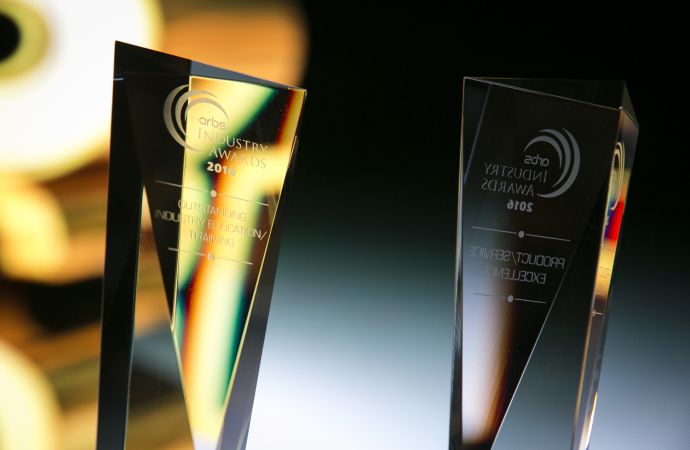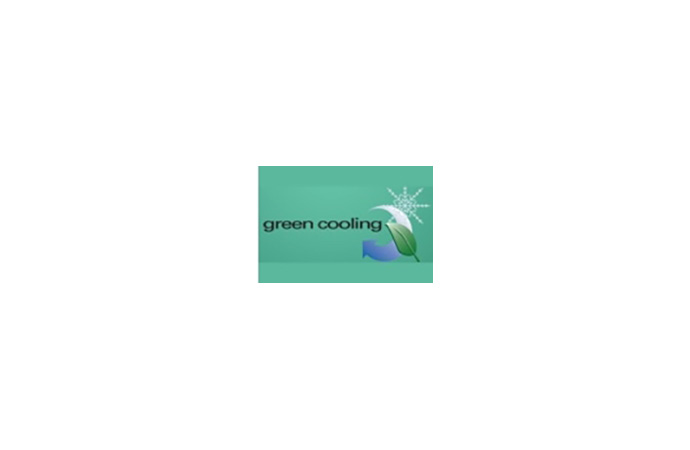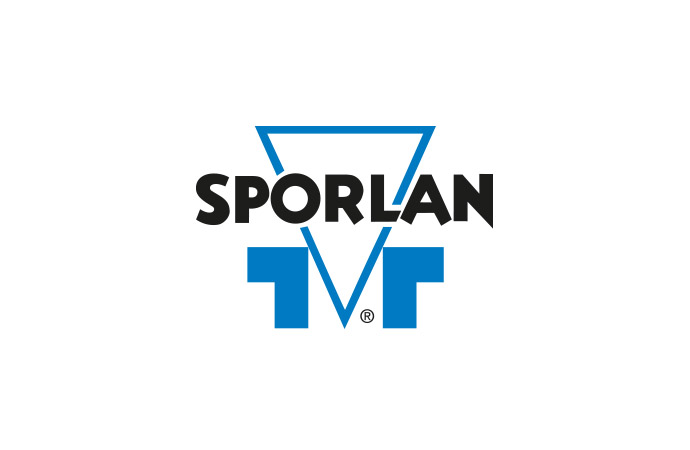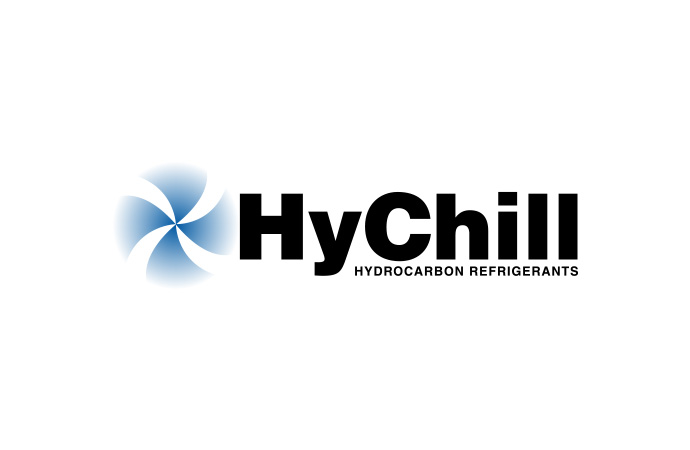Greenpeace has updated its Cool Technologies report, which samples companies and enterprises using HFC-free technologies such as hydrocarbon technologies offered by partners of hydrocarbons21.com among other companies, and brings impressive examples for the application of natural refrigerants in a number of applications.

Titled ‘COOL TECHNOLOGIES: WORKING WITHOUT HFCs - 2010: Examples of HFC-Free Cooling Technologies in Various Industrial Sectors’, the report demonstrates that “there is already a wide array of safe and commercially proven HFC-free technologies available to meet nearly all those human needs that were formerly met by fluorocarbons”.
HFC-free products are entering the market almost on a weekly basis and cover nearly the full spectrum of applications. And although, so far, HFC-free applications are mainly used in developed countries, they offer a great opportunity for developing countries to leap-frog HFCs on their way of phasing out HCFCs and to chose directly natural refrigerants as an environmentally and economically sustainable solution.
Domestic refrigeration: Greenfreeze has conquered the markets
In 1992, Greenpeace developed HFC-free refrigerators that use hydrocarbons as refrigerant. The technology is called Greenfreeze and has been so well adopted that there are now more than 400 million hydrocarbon or Greenfreeze refrigerators in the world, with 35-40% of the annual global production of domestic refrigerators and freezers in general (~100 million units/year) being Greenfreeze.
Greenfreeze technology dominating the European, Japanese and Chinese market, all major manufacturers in these markets are producing Greenfreeze refrigerators. In China, 75% of new domestic refrigerators use R-600a. Greenfreeze refrigerators are also produced in Latin America (Argentina and Brasil) and are available in North America (Canada, Mexico, although not in the U.S. yet).
Domestic and small commercial refrigeration: SolarChill
Another breakthrough technology is SolarChill, a small vaccine refrigerator that operates directly from solar photovoltaic panels without batteries or a charge controller. When the sun is shining, DC power generated by the solar panels operates the variable voltage DC compressor which freezes ice-packs used in an ice bank. The ice bank stores energy which is used to maintain vaccine compartment temperatures at WHO recommended level during periods when the sun is not shining for up to five days. The vaccine compartment temperature is self-regulated by thermal design, and does not rely on electronic control devices.
The SolarChill has a special built-in feature which prevents freezing of vaccines. An intelligent fan enhances the convection circulation of the cold air and is operated by a small rechargeable battery, which is recharged by the solar power. The current generation of SolarChill (Vestfrost model MKSO44) has WHO PQS qualification for +20 to +32 oC ambient temperatures. However, in field tests, the units have operated under lower and higher ambient temperatures ranges of +10 to +42oC.
The big names moving to hydrocarbons
In the effort to reduce their carbon footprint and show environmental responsibility, several multinational corporations such as Coca Cola, Unilever, McDonald's, Carlsberg and PepsiCo have joined in the campaign Refrigerants, Naturally! which aims at replacing HCFCs and HFCs in their cooling equipment with natural refrigerants. A few examples of their initiatives:
Those who offer the technology
With the growing global demand for sustainable cooling equipment there is a steady growth in the number of companies producing and marketing equipment with natural refrigerants. To name just a few:
Hydrocarbons continue to gain acceptance in commercial air-conditioning. Hydrocarbon chillers are now available in a wide variety of sizes, with the largest being around 1000kW.
Furthermore, it is widely accepted that propane and other hydrocarbons are the optimal alternative, nearly drop-in replacements for HCFC-22 in air-conditioning. Companies in the Netherlands, Australia, Singapore, Malaysia, Thailand, Jamaica and other countries have completed numerous conversions of R-22 installations to hydrocarbons with significant energy savings. These conversions of used equipment demonstrate that hydrocarbons can be safely applied, and should be an incentive to equipment manufacturers to produce new air conditioning units with propane and other hydrocarbons. The advantage of converting to hydrocarbon refrigerant is that it is environmentally friendly and little or no changes changes need to be made to the retrofitted air conditioning units.
A particularly impressive conversion project has been carried out by Econergy Engineering Services in cooperation with Rexham Engineering at the Mona Campus of the University of West Indies in Jamaica, where they converted nearly 4,000 air-conditioning units from HCFC-22 to R-290. The energy reductions due to the superior efficiency of propane, average between 15 to 20% per unit. In addition, the hydrocarbon units require less maintenance and repair. These two factors combined results in very significant cost benefits to the university.
Hydrocarbons in mobile air-conditioning
Hydrocarbons are also considered a reliable alternative to HFCs in mobile air-conditioning. Though at the present there are no hydrocarbon based mobile air-conditioners on the world market, an estimated 7 million cars have been converted, outside of regulatory framework, from CFCs and HFCs to hydrocarbons. Such routine drop-in conversion are taking place in Australia, United States, Canada, Philippines and elsewhere. Since hydrocarbons are flammable, conversion from HFCs to hydrocarbons must however follow standard safety procedures.
Send your input for future updates of the report!
A report under the same title was published by Greenpeace in 2000, 2008 and 2009 and it continues to be updated. Greenpeace welcomes receiving information regarding new examples of HFC-free technologies, such as hydrocarbons. Please forward them to jmate@telus.net.
HFC-free products are entering the market almost on a weekly basis and cover nearly the full spectrum of applications. And although, so far, HFC-free applications are mainly used in developed countries, they offer a great opportunity for developing countries to leap-frog HFCs on their way of phasing out HCFCs and to chose directly natural refrigerants as an environmentally and economically sustainable solution.
Domestic refrigeration: Greenfreeze has conquered the markets
In 1992, Greenpeace developed HFC-free refrigerators that use hydrocarbons as refrigerant. The technology is called Greenfreeze and has been so well adopted that there are now more than 400 million hydrocarbon or Greenfreeze refrigerators in the world, with 35-40% of the annual global production of domestic refrigerators and freezers in general (~100 million units/year) being Greenfreeze.
Greenfreeze technology dominating the European, Japanese and Chinese market, all major manufacturers in these markets are producing Greenfreeze refrigerators. In China, 75% of new domestic refrigerators use R-600a. Greenfreeze refrigerators are also produced in Latin America (Argentina and Brasil) and are available in North America (Canada, Mexico, although not in the U.S. yet).
Domestic and small commercial refrigeration: SolarChill
Another breakthrough technology is SolarChill, a small vaccine refrigerator that operates directly from solar photovoltaic panels without batteries or a charge controller. When the sun is shining, DC power generated by the solar panels operates the variable voltage DC compressor which freezes ice-packs used in an ice bank. The ice bank stores energy which is used to maintain vaccine compartment temperatures at WHO recommended level during periods when the sun is not shining for up to five days. The vaccine compartment temperature is self-regulated by thermal design, and does not rely on electronic control devices.
The SolarChill has a special built-in feature which prevents freezing of vaccines. An intelligent fan enhances the convection circulation of the cold air and is operated by a small rechargeable battery, which is recharged by the solar power. The current generation of SolarChill (Vestfrost model MKSO44) has WHO PQS qualification for +20 to +32 oC ambient temperatures. However, in field tests, the units have operated under lower and higher ambient temperatures ranges of +10 to +42oC.
The big names moving to hydrocarbons
In the effort to reduce their carbon footprint and show environmental responsibility, several multinational corporations such as Coca Cola, Unilever, McDonald's, Carlsberg and PepsiCo have joined in the campaign Refrigerants, Naturally! which aims at replacing HCFCs and HFCs in their cooling equipment with natural refrigerants. A few examples of their initiatives:
- Pepsi has over 8000 vending machines around the world using hydrocarbons or CO2 technologies. About 5,000 of these are hydrocarbon units. The company has pioneered the testing of CO2 and hydrocarbon equipment in the United States. Starting in 2009, all new Pepsi coolers in Turkey are HFC-free.
- By 2009 Unilever had placed over 400,000 hydrocarbon ice-cream coolers around the world, including South Africa, China, Europe, Brasil and the United States. These coolers contain approximately 100 grams of hydrocarbons, and have a 9% energy savings over their HFC counterparts.
Those who offer the technology
With the growing global demand for sustainable cooling equipment there is a steady growth in the number of companies producing and marketing equipment with natural refrigerants. To name just a few:
- Sanyo sells hydrocarbon domestic and commercial refrigerators.The company reports that since 2005 almost all beverage companies in Japan have been purchasing vending machines using natural refrigerants (CO2 or HC).
- Mayekawa developed a central air-conditioning and hot water supply system using hydrocarbon zeotropic blend of isobutane and propane. The “system uses air and water as both the heat sources and heat sink to provide cooling, heating and hot water production”.
- Danfoss offers a full line of energy-optimised R600a compressors for all size applications including household appliances and commercial equipment. They are available in a range of voltage ratings. Some are designed specifically for tropical conditions or for direct current solar power or difficult electrical supply connections.
- Earthcare Products Ltd. is marketing a wide range of commercial cooling equipment using hydrocarbons, including water coolers, chest chill cabinets, ice cream conservators, bottle chillers and wine cooler dispensers.
Hydrocarbons continue to gain acceptance in commercial air-conditioning. Hydrocarbon chillers are now available in a wide variety of sizes, with the largest being around 1000kW.
Furthermore, it is widely accepted that propane and other hydrocarbons are the optimal alternative, nearly drop-in replacements for HCFC-22 in air-conditioning. Companies in the Netherlands, Australia, Singapore, Malaysia, Thailand, Jamaica and other countries have completed numerous conversions of R-22 installations to hydrocarbons with significant energy savings. These conversions of used equipment demonstrate that hydrocarbons can be safely applied, and should be an incentive to equipment manufacturers to produce new air conditioning units with propane and other hydrocarbons. The advantage of converting to hydrocarbon refrigerant is that it is environmentally friendly and little or no changes changes need to be made to the retrofitted air conditioning units.
A particularly impressive conversion project has been carried out by Econergy Engineering Services in cooperation with Rexham Engineering at the Mona Campus of the University of West Indies in Jamaica, where they converted nearly 4,000 air-conditioning units from HCFC-22 to R-290. The energy reductions due to the superior efficiency of propane, average between 15 to 20% per unit. In addition, the hydrocarbon units require less maintenance and repair. These two factors combined results in very significant cost benefits to the university.
Hydrocarbons in mobile air-conditioning
Hydrocarbons are also considered a reliable alternative to HFCs in mobile air-conditioning. Though at the present there are no hydrocarbon based mobile air-conditioners on the world market, an estimated 7 million cars have been converted, outside of regulatory framework, from CFCs and HFCs to hydrocarbons. Such routine drop-in conversion are taking place in Australia, United States, Canada, Philippines and elsewhere. Since hydrocarbons are flammable, conversion from HFCs to hydrocarbons must however follow standard safety procedures.
Send your input for future updates of the report!
A report under the same title was published by Greenpeace in 2000, 2008 and 2009 and it continues to be updated. Greenpeace welcomes receiving information regarding new examples of HFC-free technologies, such as hydrocarbons. Please forward them to jmate@telus.net.
MORE INFORMATION
Related stories











